Abstract
Lime flocculation/sedimentation in the first process unit of a 4,500-m3/day wastewater reclamation plant reduced numbers of microorganisms extensively when operated at pH 11.2. The efficiency was much less at lower pH values, and some bacteria even multiplied at pH 9.6. Data on reduction in the number of microorganisms in the lime treatment and subsequent units indicate that inactivation by hydroxide alkalinity plays an important role in the efficiency of lime treatment. Reductions in the numbers of enteric viruses were higher than those of coliphages, enterococci, and total plate and coliform bacteria, which indicate that lime treatment can be monitored by means of coliphage and conventional bacteriological tests. This paper illustrates the valuable role of high-pH lime treatment in reducing the load of pathogenic microorganisms on subsequent units, including ultimate disinfection processes, which is important in the multiple safety barrier concept of wastewater reclamation processes.
Full text
PDF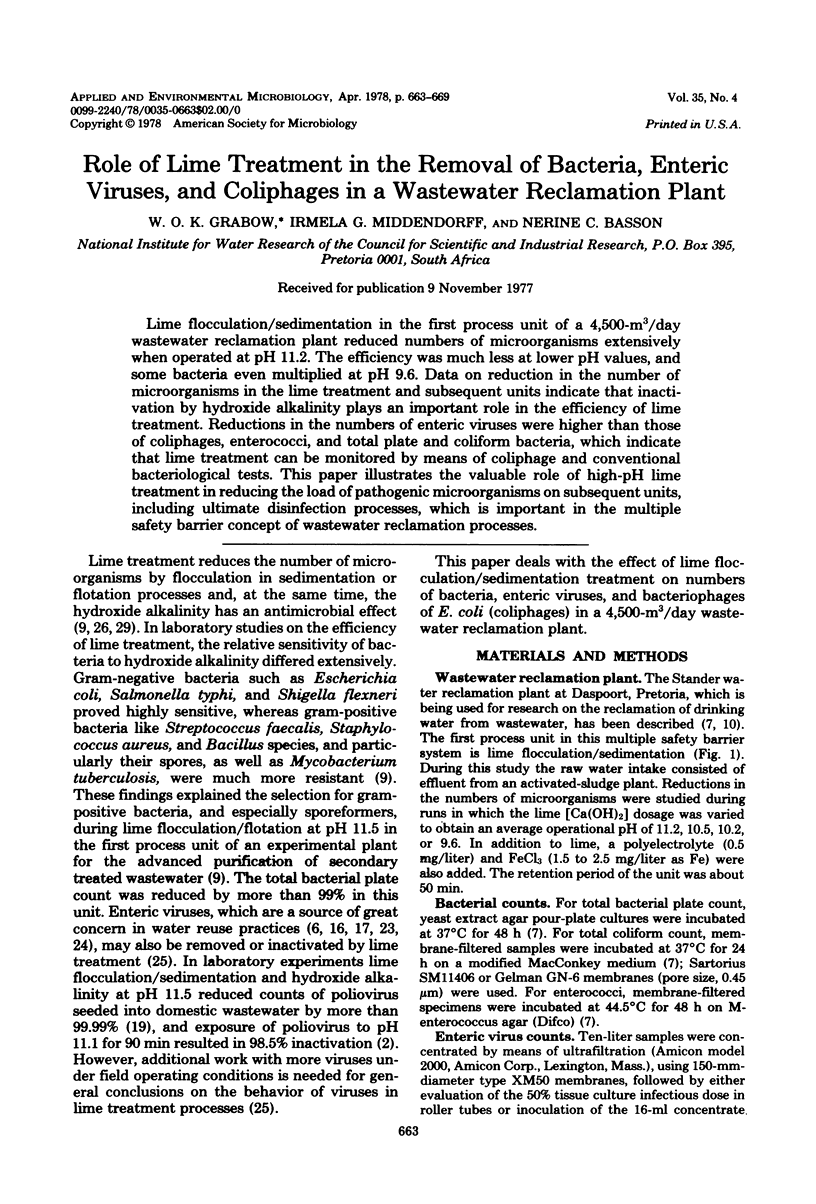
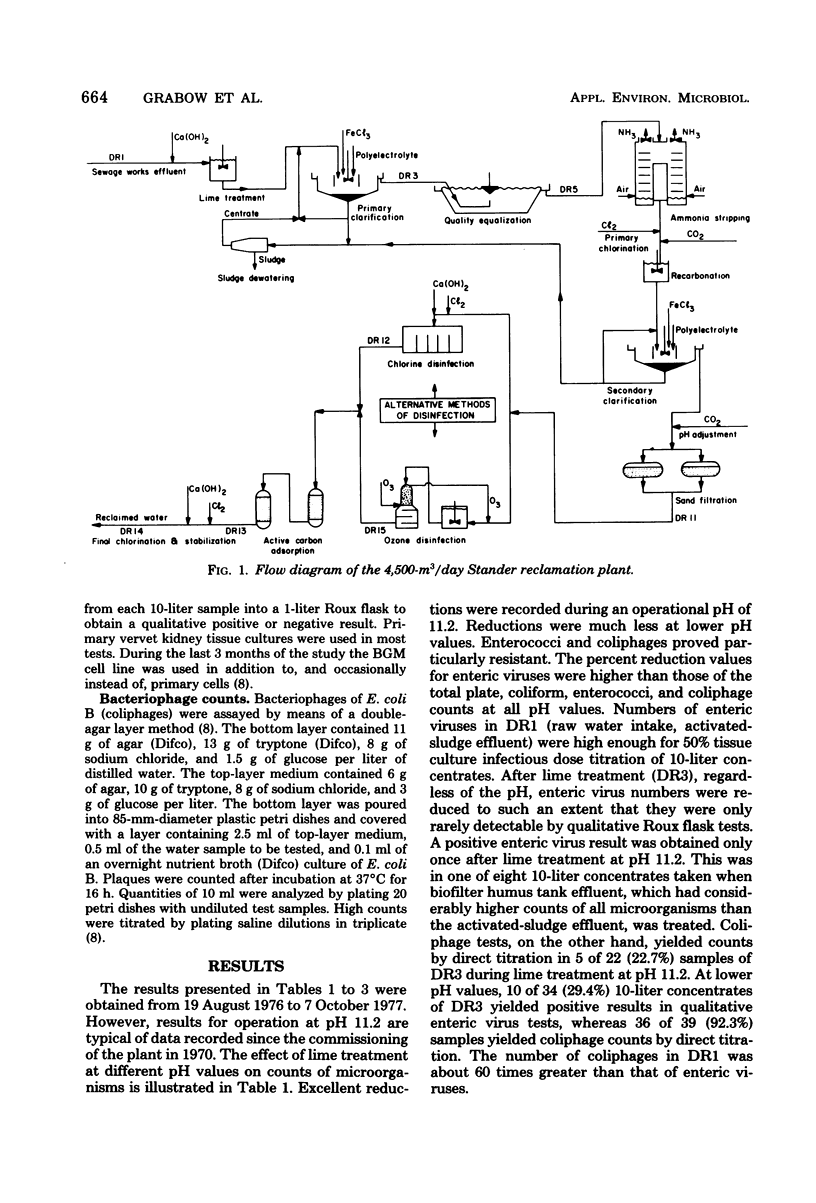
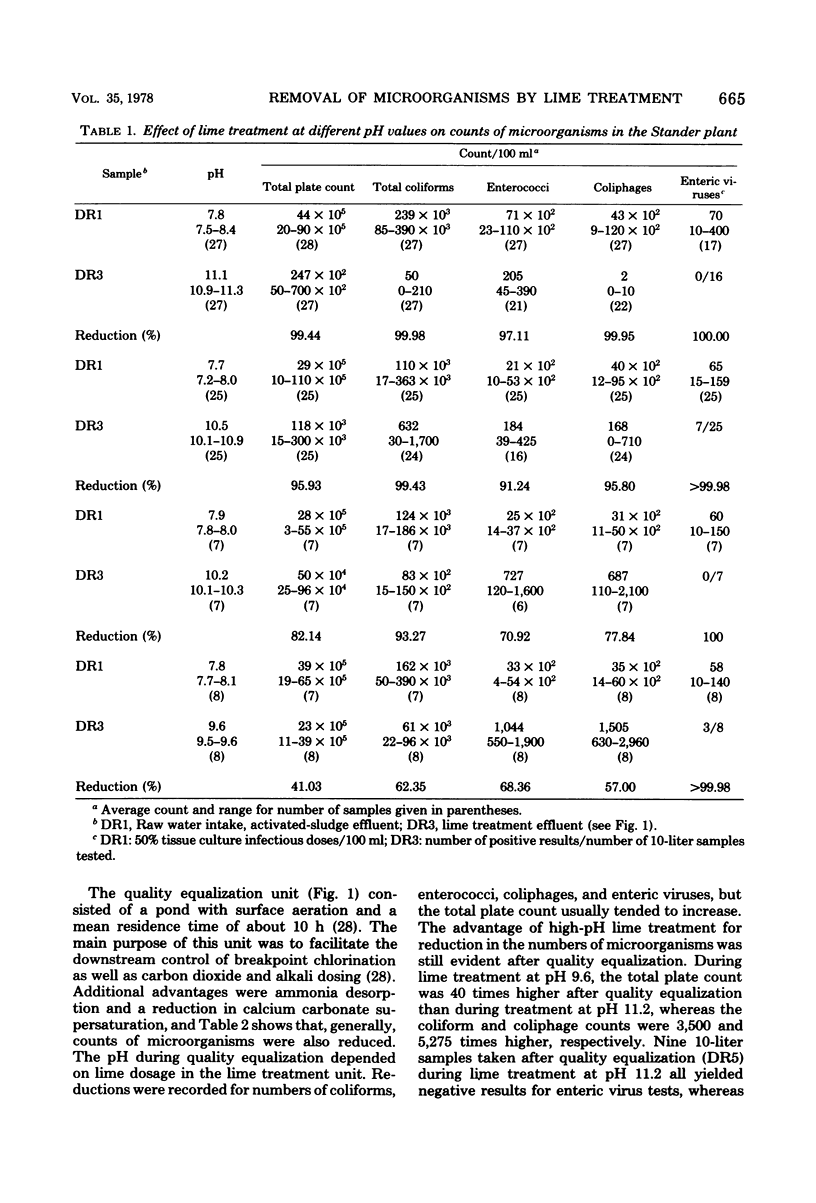
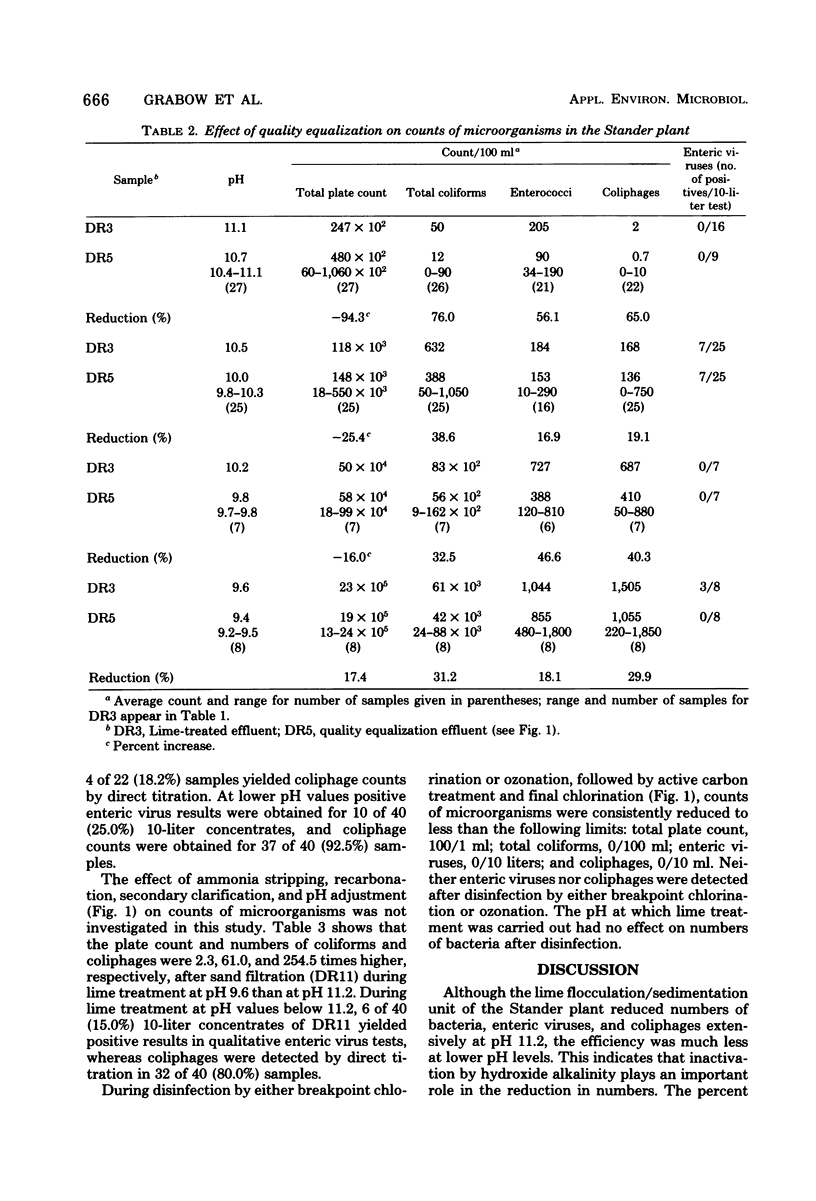
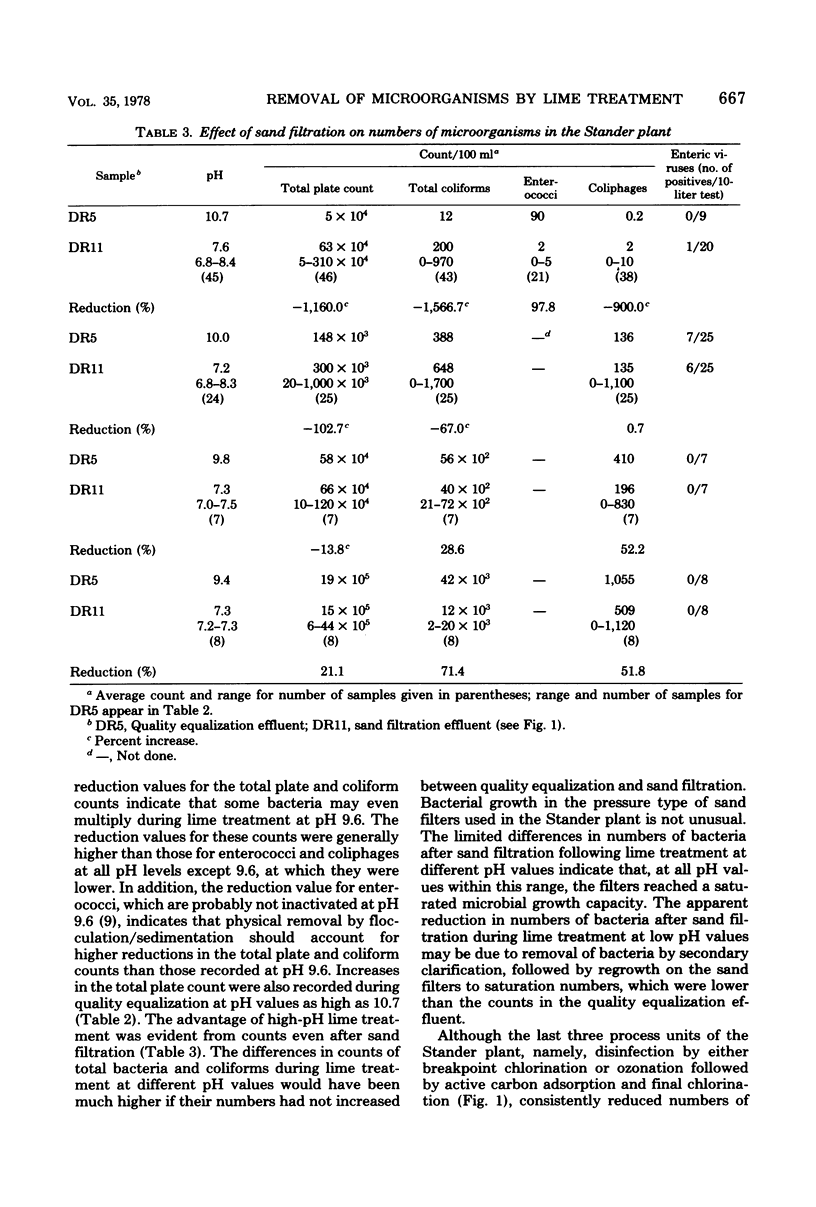
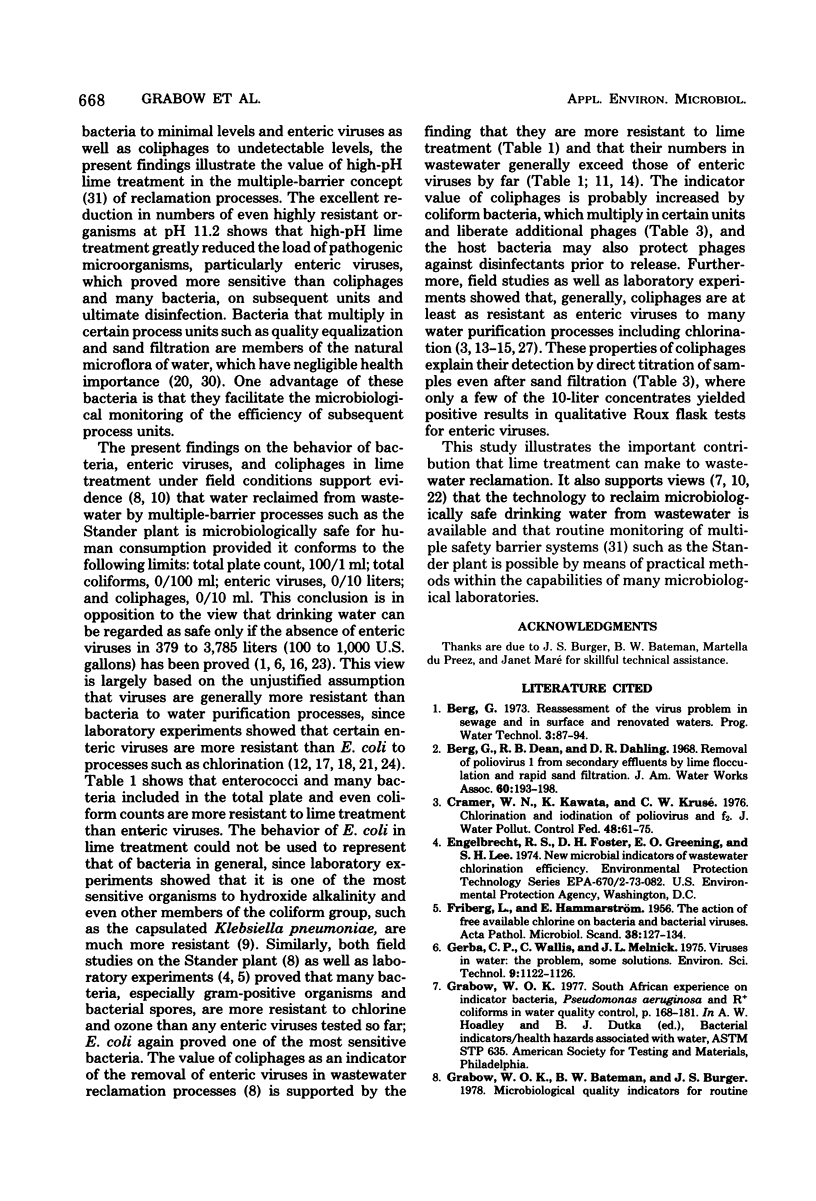

Selected References
These references are in PubMed. This may not be the complete list of references from this article.
- Cramer W. N., Kawata K., Krusé C. W. Chlorination and iodination of poliovirus and f2. J Water Pollut Control Fed. 1976 Jan;48(1):61–76. [PubMed] [Google Scholar]
- FRIBERG L., HAMMARSTROM E. The action of free available chlorine on bacteria and bacterial viruses. Acta Pathol Microbiol Scand. 1956;38(2):127–134. doi: 10.1111/j.1699-0463.1956.tb00986.x. [DOI] [PubMed] [Google Scholar]
- Sattar S. A., Ramia S., Westwood J. C. Calcium hydroxide (lime) and the elimination of human pathogenic viruses from sewage: studies with experimentally-contaminated (poliovirus type 1, Sabin) and pilot plant samples. Can J Public Health. 1976 May-Jun;67(3):221–225. [PubMed] [Google Scholar]
- Sebastian F. P. Purified wastewater--the untapped water resource. J Water Pollut Control Fed. 1974 Feb;46(2):239–246. [PubMed] [Google Scholar]
- Tifft E. C., Moffa P. E., Richardson S. L., Field R. I. Enhancement of high-rate disinfection by sequential addition of chlorine and chlorine dioxide. J Water Pollut Control Fed. 1977 Jul;49(7):1652–1658. [PubMed] [Google Scholar]


